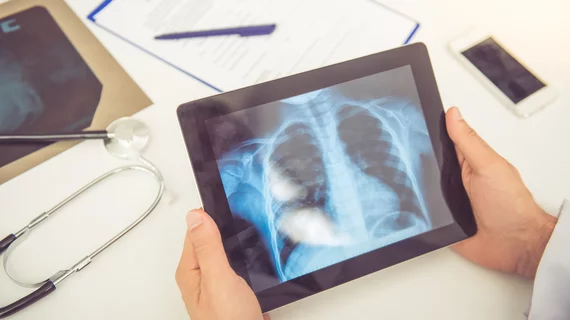The COVID-19 pandemic may serve as a “wake-up call” for hospitals and practices that are hesitant to let radiologists work remotely, one writer believes. New guidance in Radiology reveals that some hospitals may be coming around to his argument.
Employers across the U.S. are urging employees to stay at home to help flatten the curve and keep the coronavirus from spreading more quickly. Barry Julius, MD, a physician in nuclear medicine with Saint Barnabas Medical Center in New Jersey, believes the same logic should be applied in imaging.
“Sometimes you need a wake-up call to get you going. And, the coronavirus is doing just that,” Julius, also founder and editor of the blog Rad Resident, wrote Sunday. “This pandemic has demanded that the hospital should be focusing their resources, so that home teleradiology is available to their radiologists. It’s the right thing to do,” he added later.
At Julius’ own practice, leaders are “intensely discussing preparations for the coronavirus storm that has begun.” This includes questions about what happens if a radiologist falls ill, and whether the imaging team can provide the same level of service with home-based members. They’re “debating appropriate responses,” but currently do not deploy home teleradiology services.
The associate radiology residency director offered up three arguments as to why physicians should be granted work-from-home privileges:
1) Reducing radiologist exposure: Yes, you’d still need to maintain some staff on-site for interventional procedures or radioactive iodine administration. However, he believes it’s unnecessary for all to show up in person. This is especially relevant for older radiologists or those with babies or elderly relatives at home. “Why increase the risks to employees and physicians when you can mitigate exposure to the coronavirus?”
2) Increasing physician efficiency: The pandemic will likely result in more patients arriving at your doorstep in need of imaging services. Offering radiologists the ability to work remotely would give hospitals added capacity to avoid being overwhelmed. “One never knows when the flood of imaging for a disease will start. A hospital nightmare scenario would be to have a large number of patients storming the emergency department without the capability to increase the number of reads during an emergency,” Julius wrote.
3) Bolstering workforce flexibility: It’s unavoidable that some radiologists will contract the coronavirus, and most are likely to display “very mild symptoms” that might compel them to tough it out and go into work. Why not eliminate the option and encourage all to work remotely where possible? This could also allow radiologists with children, at home from school during the pandemic, to contribute. “The last thing that the hospital needs is a shortage of radiologists during a time of need,” Julius wrote.
What others are doing
While the Livingston, New Jersey, practice does not currently offer such an option, many hospitals are shifting their radiologists into home-based practice, according to new research published Monday in Radiology. The RSNA gathered recommendations from several top healthcare institutions on their preparedness plans and several are looking to let radiologists stay at home to interpret cases:
- University of Washington Medicine in Seattle, for one, is focused on providing radiology faculty with the ability to work from home, if needed for isolation. Staff who do not need to be on-site—such as coders, billers and schedulers—are directed to work remotely, and the majority of its meetings are now conducted through video.
- Atlanta-based Emory University’s School of Medicine is quarantining clinical radiologists who have traveled to certain countries or have been exposed to patients with COVID-19. It’s now working to rapidly obtain and deploy additional home workstations, “so that asymptomatic radiologists can work from home.”
- New York University Langone Health already allows a significant number of its clinical faculty to work remotely as part of its clinical wellness program. It’s also allowing those who’ve traveled to high-risk areas to interpret cases at home, but with the possibility of such quarantines skyrocketing they’re ordering more workstations.
- Almost all radiologists at the University of Wisconsin Hospital, in Madison, have home PACS workstations, and the use of remote interpretation has been incorporated into its radiology department’s response plan.
- The University of California San Francisco is aiming to decrease foot traffic in its reading rooms and is encouraging remote consultations by video or phone, rather than in person. They’re also exploring strategies to allow diagnostic radiologists to work from home, too, and are developing “guidance for when this is appropriate.”
“We are re-thinking how radiology can deliver optimal imaging and treatment while reducing unnecessary movement and congregation of patients within our hospital environment,” Bien Soo Tan, MD, chair of the Division of Radiological Sciences at Singapore General Hospital, added in a statement accompanying the guidance.

